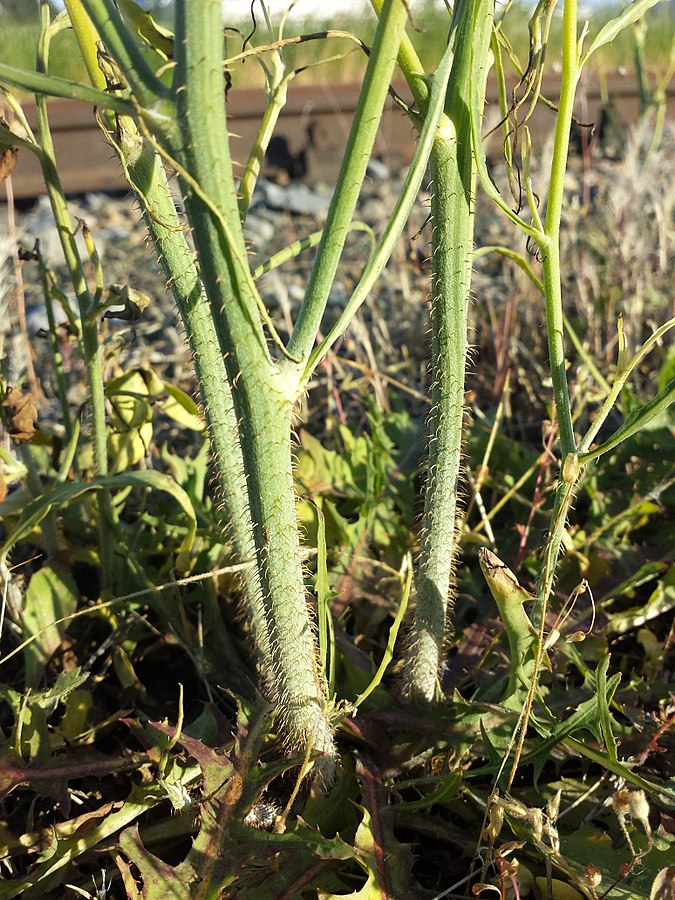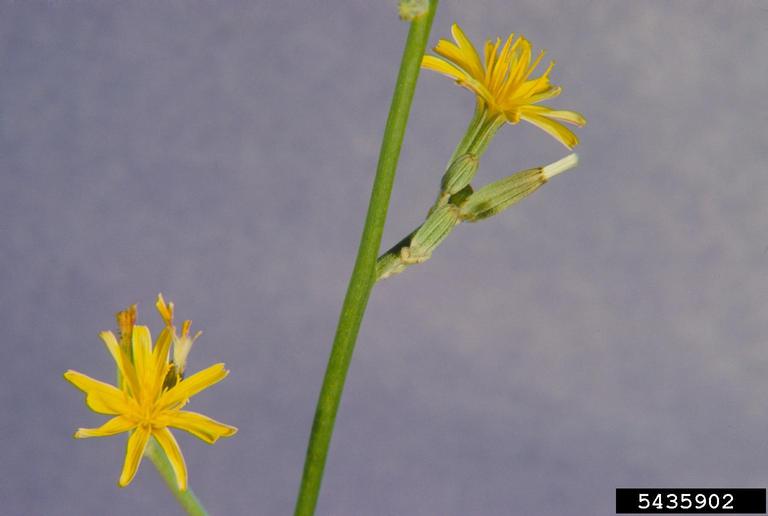Rush Skeletonweed

Rush Skeletonweed
(Chondrilla juncea)
Priority: - Prevent / EDRR
Tags: Agricultural | Terrestrial
Identification and Reproduction
Identification:
- Rush skeletonweed is a perennial that grows up to 1.3 m tall.
- Stems are filled with a milky fluid, the base is covered in stiff red to brown hairs.
- Leaves are oblong, with lobes pointing downwards near the basal portion of stem, upper leaves are scale-like bracts.
- Flowers occur from July to September. They are found at the ends of stems in a cluster of 2-5. Flowers are small, yellow and daisy-like.
Reproduction:
- Capable of reproducing by seed and vegetatively.
- Rush skeletonweed can exteed roots and produce multiple daughter rosettes.
- Can form an extensive root system as root buds continue to produce daughter plants.
- This plant is very brittle and can easily break apart, each fragment can reproduce.
- It is a very variable seed producer and is dependent on growing conditions; each plant can produce 20,000 parachute-like seeds.
- Seeds are easily dispersed by wind, water, animals and even humans.
Habitat & Ecology
- Typically found on rangelands, roadsides and distrubed sites.
- Prefers coarse-textured, well-draining soils.
- In a healthy native plant community, rush skeletonweed is a poor competitor.
- This plant is a major concern in the Kootenay and Okanagan areas of BC.
Impacts
Social:
- As it matures and invades more area the stems become wiry and tangled. This will interfere with the harvesting process and equipment.
- It reduces foraging opportunities for livestock.
- Reduces agricultural yields.
Ecological:
- Infestations reduce habitat availabilty for forage plants.
- Its extensive root system allows it to tap into soil nutrients and water from deep depths.
Management
Prevention is a high priority for this plant.
- Since this plant is prone to breakage it will take several years to successfully eradicated. Treatments will need to be repeated to deplete the root reserves and remove new plants that establish from broken fragments.
- If preventable avoid traveling or allowing animals to pass through known infested sites.
Mechanical/Manual Control:
- Small infestations can be hand-pulled or dug up.
- Mowing can be utilized but this has to be applied regularly.
- Do not till or cultivate the area as this will spread root and stem fragments further.
Resources
For more information on how to identify this Weed Seed, check out the Canadian Food Inspection Agency's datasheet Chondrilla juncea (Rush skeletonweed).
Download A Guide to Weeds in British Columbia on Rush Skeletonweed.
View header photo here.




